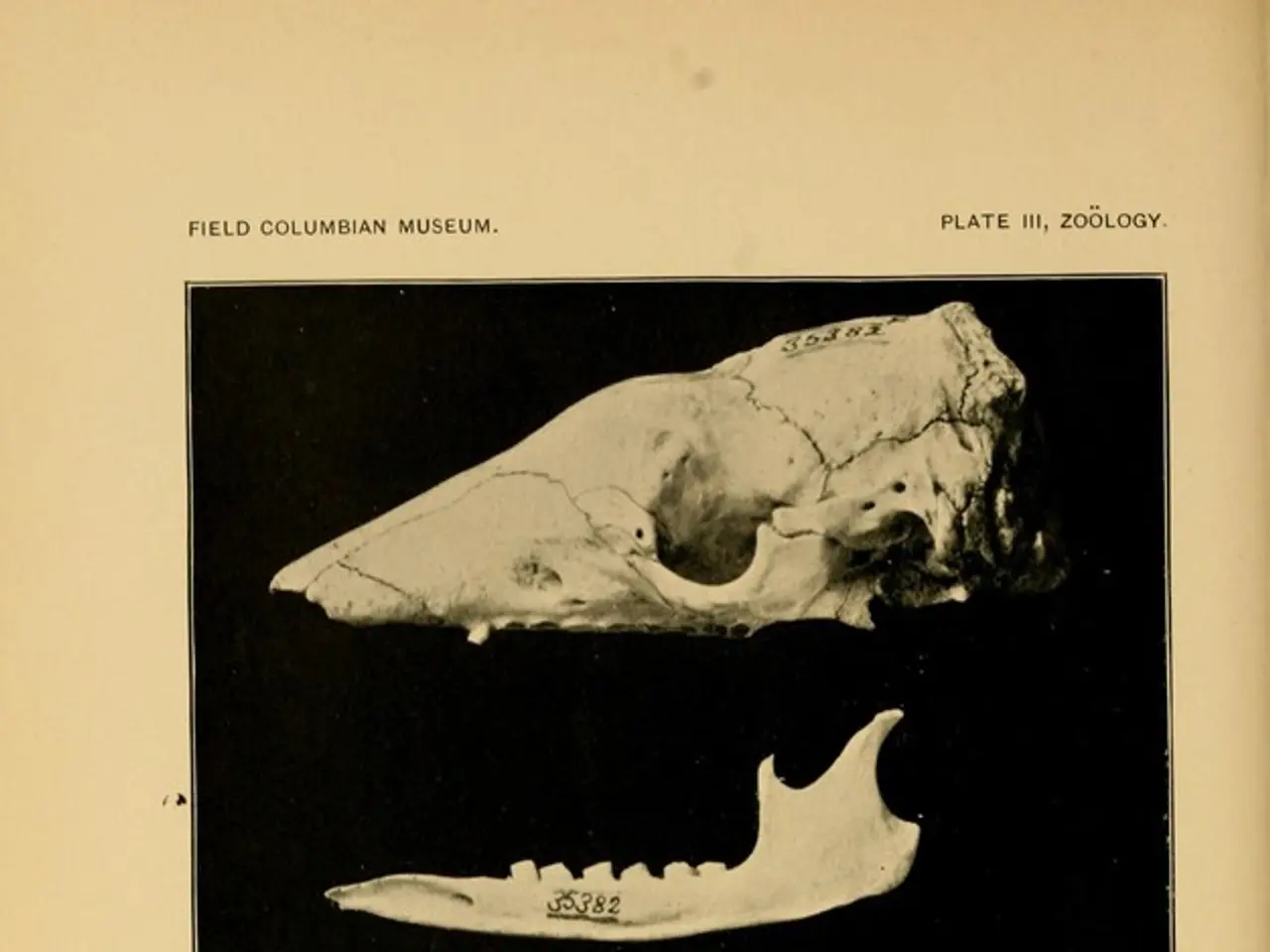Benign Cartilage Tumors: Signs, Remedies, and Additional Info
Understanding Chondromas: Benign Cartilage Tumors
Chondromas are a type of benign cartilage-forming tumor that primarily arise in bones. These tumors can be categorized into four main types: enchondromas, osteochondromas, periosteal chondromas, and soft tissue chondromas.
Enchondromas are found within the bone, while osteochondromas grow out from the bone. Periosteal chondromas start in the tough membrane surrounding bones, and soft tissue chondromas grow on tendons.
Chondromas are often asymptomatic and are incidentally discovered during imaging. However, when symptomatic, they can cause localized pain, swelling, or a palpable mass. Mechanical symptoms such as nerve or vascular compression may occur with larger lesions, and pathologic fractures may occur if the bone is weakened.
Causes of chondromas are not fully understood, but they are believed to arise from cartilage cells (chondrocytes) in growth plates or bone surface cartilage. In some cases, they may be congenital or developmental anomalies in the growth plate, or previous trauma or irradiation to growth plates may contribute, especially for osteochondromas. Genetic factors can underlie multiple enchondromatosis conditions, such as Ollier disease and Maffucci syndrome, which increase the risk of developing multiple chondromas.
Risk factors for chondromas include younger age groups during bone growth phases, with most osteochondromas developing before skeletal maturity. Genetic predisposition in hereditary multiple exostoses or enchondromatosis syndromes also increases the risk. Conditions like Paget’s disease or previous bone trauma may also increase risk or complicate presentation.
Diagnosis of chondromas is primarily through imaging, with X-rays showing characteristic cartilage-capped bony projections (osteochondroma) or intramedullary cartilaginous lesions (enchondroma). MRI is useful to assess cartilage cap thickness and rule out malignancy, while CT can help define bone involvement. Biopsy may be recommended if malignant transformation is suspected, and bone scans can detect metabolic activity in suspicious lesions.
Treatment options for chondromas vary depending on the type and severity of symptoms. Asymptomatic, stable lesions are often monitored, while surgical excision may be necessary for symptomatic, growing, or malignant lesions. Surgery often involves removal of the lesion, including the cartilage cap and underlying bone. Malignant transformation requires oncologic management, including wide excision and possibly adjunct therapies.
Prognosis for solitary, benign chondromas is excellent following complete excision, with a low risk of malignant transformation. However, the risk is higher in multiple or syndromic cases, and malignant transformation (to chondrosarcoma) significantly worsens the prognosis and requires aggressive treatment. Recurrence after surgery is uncommon if completely removed.
In summary, chondromas are generally benign cartilage tumors with variable symptoms primarily related to size and location, diagnosed mainly by imaging, and managed either conservatively or surgically with excellent outcomes unless malignant transformation occurs. Osteochondromas form the common subtype presenting as bony lumps that may compress nearby structures. Night pain or pain at rest may signal potential malignancy in chondromas, and recovery time for people who have surgery depends on the location of the tumors and whether or not they have had bone grafts.
Science plays a crucial role in understanding medical conditions like bone cancer (chondromas), which are benign cartilage tumors. In the context of health and wellness, chronic diseases such as chondromas require careful monitoring and appropriate treatment to ensure a positive prognosis.




